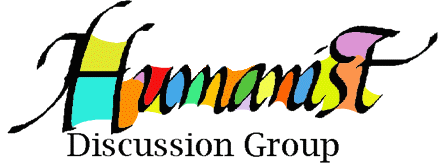Humanist Discussion Group, Vol. 39, No. 12.
Department of Digital Humanities, University of Cologne
Hosted by DH-Cologne
www.dhhumanist.org
Submit to: humanist@dhhumanist.org
Date: 2025-05-14 08:23:02+00:00
From: Willard McCarty <willard.mccarty@mccarty.org.uk>
Subject: repetition and intelligence: photography & the camera
In reply to Manfred on the topic, comments relating to his Comments 2
and 4. But before I do that, let me say how deeply satisfying it is to
see once again Humanist fulfilling its intended aim of scholarly
discussion. Newsy announcements are fine and welcome, but this is what
the seminar (as I call it) is for.
On Comment 2, specifically to the remark that,
> a painted portrait much
> better catches the spirit of a person than a photograph. Some of us even
> believe it. Nevertheless competing with a camera becomes boring after
> some time - so the pictorial arts have (almost) completely dropped the
> idea of visually representing reality.
This is Picasso's comment to his friend, the Hungarian-French artist and
photographer Brassaï in 1939, on the former's visit to his friend's flat in
Paris:
> When one sees what you express through photography, one realizes
> everything that can no longer be the concern of painting. Why would
> the artist stubbornly persist in rendering what the lens can capture
> so well? That would be crazy, don't you think? Photography came
> along at a particular moment to liberate painting from literature of
> all sorts, from the anecdote, and even from the subject. In any
> case, a certain aspect of the subject now belongs to the realm of
> photography. Shouldn't painters take advantage of their new-found
> freedom and do something else?
(Brassaï, Conversations with Picasso, trans. Jane Marie Todd, Chicago
1999, 55)
Note the date.
On Comment 4, about something I wrote a while ago. Having since then
spent some time studying the history of photography and run into the
great Polish-American curator (Director of Photography at the MOMA),
John Szarkowski, I've developed rather different ideas about seeing by
means of a machine. Susan Sontag's remark that “photography is the only
art that is ‘natively surreal’” (Sontag, On Photography, Farrar, Straus
and Giroux, 1977, 47) helps open one's eyes to more in the work of
flâneur and pioneer documentary photographer Eugène Atget (1857-1927),
who as Szarkowski notes in his essay on "Atget's Trees" may quite simply
have done unintentionally what the camera provoked him into doing in his
documentary work. In that essay Szarkowski summarises what happens:
> To quote out of context is the essence of the photographer’s craft…
> The line of decision between in and out is the picture’s edge. While
> the draughtsman starts with the middle of the sheet, the
> photographer starts with the frame. The photograph’s edge defines
> content. It isolates unexpected juxtapositions. By surrounding two
> facts, it creates a relationship. The edge of the photograph
> dissects familiar forms, and shows their unfamiliar fragment. It
> creates the shapes that surround objects. The photographer edits the
> meanings and patterns of the world through an imaginary frame. This
> frame is the beginning of his picture’s geometry. It is to the
> photograph as the cushion is to the billiard table.
Van Deren Coke, ed. One Hundred Years of Photographic History.
Essays in Honor of Beaumont Newhall. Albuquerque: University of
New Mexico Press, 1975, pp. 161-168.
I'm thinking nowadays that I've been giving the machine a bad rap that
really belongs to us during an early phase of digital humanities--when
it was called 'humanities computing'.
Comments.
Best,
Willard
--
Willard McCarty,
Professor emeritus, King's College London;
Editor, Humanist
www.mccarty.org.uk
_______________________________________________
Unsubscribe at: http://dhhumanist.org/Restricted
List posts to: humanist@dhhumanist.org
List info and archives at at: http://dhhumanist.org
Listmember interface at: http://dhhumanist.org/Restricted/
Subscribe at: http://dhhumanist.org/membership_form.php
